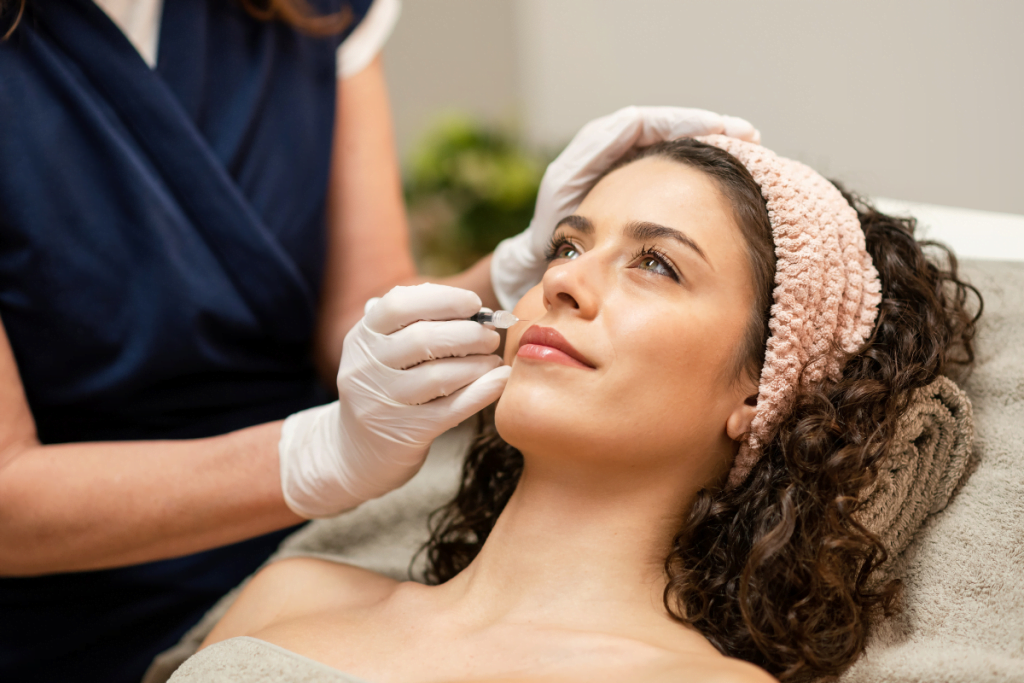Dermal filler conversations are now shaped by social media clips and selective “before and after” posts. In clinic onboarding, the question what is a dermal filler often comes up alongside worries about long-term harm. Those worries can affect consent quality, scheduling, and even product selection. A practical myth-check helps your team keep expectations realistic and documentation consistent.
For licensed practices, the goal is not to “win” a debate. It is to separate common misconceptions from label-based facts, known risks, and controllable process steps. Use this briefing to align staff language, reduce avoidable confusion, and support safer operations.
Key Takeaways
- Myths spread fast: photos and anecdotes rarely show full context.
- Material matters: gel fillers and biostimulatory options behave differently.
- Risks are real: distinguish expected reactions from complications needing escalation.
- Process reduces errors: track lot/expiry, verify sourcing, and document counseling.
- Cost talk needs structure: clarify what is included in the clinical service.
What Is a Dermal Filler and Why Myths Persist
A dermal filler is an injectable implant used to restore volume, contour, or correct certain soft-tissue changes. In plain language, it is a “volume support” treatment placed under the skin. The category includes different materials and rheologies, so outcomes and risks are not identical across products. That variability makes simplified internet claims attractive, but often inaccurate.
Myths persist because most public examples are missing clinical context. A viral post rarely states the product type, injection plane, volume used, prior treatments, or the patient’s baseline anatomy. “Face fillers before and after photos” also overrepresent extremes. Many images are posted because something looked unusually good or unusually bad.
Why it matters: Misinformation can derail informed consent and increase complaint risk.
Access is limited to licensed healthcare accounts.
When patients cite “do fillers ruin your face” or “why I stopped using fillers,” it helps to reframe the discussion. Emphasize that poor outcomes can stem from multiple drivers. Product choice is one variable. Technique, anatomy, dosing strategy, and follow-up systems matter just as much. For a broader category overview, your staff can reference the Dermal Fillers Category as a neutral product-family hub while keeping patient counseling anchored to the approved label and your protocols.
Materials, Longevity, and “Permanent” Claims
Much of the confusion starts with what are dermal fillers made of. Many widely used options are based on hyaluronic acid (HA), a naturally occurring polysaccharide found in skin and connective tissue. Other fillers rely on different mechanisms, such as calcium hydroxylapatite (CaHA) microspheres or poly-L-lactic acid (PLLA) particles that can stimulate collagen over time (biostimulation). Clinics should avoid treating the category as interchangeable, especially when setting expectations for reversibility and palpability.
Even when patients ask what is a dermal filler, they may actually be asking two separate questions: “What material is it?” and “How long does it last?” Longevity depends on product chemistry, crosslinking, placement depth, metabolic factors, and the anatomic region. “Lower face fillers before and after” images can look more variable because perioral and mandibular areas are dynamic and subject to ongoing tissue change.
“Types of permanent fillers” is another high-risk internet phrase. Some materials have been described as long-lasting or nonresorbable, but permanence is not a practical counseling promise. Long-lived products can still shift with aging, weight change, inflammation, or later procedures. When patients show “fillers ruined my face before and after” posts, it is often unclear whether the issue was product persistence, overcorrection, poor placement, or unrelated facial aging.
For staff refreshers on classification and clinical planning language, link out internally to Types Of Dermal Fillers and Hyaluronic Acid Overview. These can support consistent terminology across consult notes and patient education materials.
Myth vs Fact: What Patients Think They See
Online discussions often collapse nuanced outcomes into a single storyline. The most common theme is that filler always looks obvious, migrates, or “stretches the skin.” Another theme is that stopping suddenly causes a “deflated” face. In practice, apparent changes can reflect lighting, swelling, makeup, weight change, and the normal progression of aging. This is why “face fillers before and after” comparisons should be handled carefully during consultations.
When patients bring “do fillers ruin your face reddit” threads, it can help to acknowledge the emotion without validating the conclusion. Ask what outcome they are afraid of. Then map that fear to a specific, clinically recognizable risk: overcorrection, asymmetry, delayed nodules, or a vascular event. From there, you can discuss risk controls, follow-up, and when additional evaluation is needed.
| Myth | Clinic-grounded clarification |
|---|---|
| “Fillers always migrate.” | Apparent change may reflect swelling, tissue remodeling, or product selection and placement. |
| “Stopping makes your face worse.” | Volume loss can resume with aging; expectations should separate treatment effects from time. |
| “All fillers are the same.” | Material, rheology, and indication vary; counseling should match the specific product label. |
| “Men can’t get natural results.” | Natural outcomes depend on anatomy, goals, and plan; “face fillers before and after men” varies widely. |
Before-and-After Photos: Why They Mislead
Patients searching “face fillers before and after photos” or “full face fillers before and after” may not realize how much curation is involved. Photos can exclude early swelling, bruising, and the settling phase. They also rarely disclose concurrent treatments, including neuromodulators, skin resurfacing, weight loss medications, or dental changes. Angle and lens distortion can amplify cheek projection or flatten the midface.
Clinics can reduce confusion by standardizing imaging and documentation. Use consistent camera distance, lighting, and expression. Record treatment areas and product lot numbers in the chart. When you show educational images, label them as “representative” rather than predictive. If you refer staff to deeper technique-adjacent safety thinking, keep it operational by using Safety Protocols rather than informal social channels.
Natural Results vs Overcorrection
“Can fillers look natural” is usually a communication question, not a product question. Patients may mean they want fewer visible transitions, less shine, and no change in facial identity. Overfilled results can happen when treatment goals are not clearly defined, when multiple touchpoints are not coordinated, or when “maintenance” becomes reactive to photos rather than clinical assessment.
Operationally, the best control is alignment: one record, one plan, and consistent photography. If your clinic combines modalities, spell out what each treatment is meant to do. The internal overview Botox And Fillers Combined can help staff describe combination planning in a structured, non-promissory way.
Safety Signals: Expected Reactions vs Dermal Filler Complications
Searches for “dermal fillers side effects photos” can frighten patients because the most dramatic images rank well. In clinic terms, you want staff to distinguish expected, self-limited reactions from complications that warrant timely assessment. Common expected reactions can include localized swelling, erythema (redness), tenderness, and bruising. These are not the same as vascular occlusion (blocked blood vessel), infection, or vision-threatening events.
When teams answer “are dermal fillers safe,” a balanced response helps. Fillers have known risks, and safety depends on product selection, injector training, aseptic technique, anatomy awareness, and post-procedure instructions. Your internal education should also cover delayed issues such as granuloma (small inflammatory nodule) or late-onset nodules, which can be multifactorial and require evaluation.
Stock is sourced through vetted medical distributors.
Early vs Late Events to Document Clearly
Early events tend to occur in the minutes to days after treatment. These include swelling, bruising, and pain, but also rare high-acuity complications. Late events can appear weeks to months later and may be harder to attribute. Documentation quality matters in both windows. Record the product, injection sites, amount used (per your charting standard), and any immediate reactions observed in clinic.
Use consistent language in the chart. “Firmness” differs from a “nodule.” “Blanching” differs from “erythema.” Patients who say “fillers ruined my face” may be describing texture changes, asymmetry, or dissatisfaction that is not a medical complication. Still, complaints deserve structured triage and clear next steps within your clinic policy. For post-visit operational guidance, see Post-Treatment Care to align staff messaging and reduce contradictory instructions.
To support product-specific risk review, keep staff pointed to the official labeling and training resources. Comparative articles can also help teams avoid oversimplified “top 10 filler brands” narratives. If helpful for clinician planning discussions, review Restylane Vs Juvederm and Radiesse Vs Juvederm Voluma as examples of how to frame differences without implying uniform interchangeability.
Clinic Operations: Verification, Storage, and a Documentation Checklist
Myths are not only clinical. Procurement myths also circulate, especially when staff move between practices. Standardize how products enter the building, how they are logged, and how they are matched to patient records. This is where operational discipline can reduce downstream “mystery product” concerns that show up during complaints or audits.
When a new coordinator asks what is a dermal filler in the context of purchasing, they often mean: “What do we need to verify and record?” Build the answer into a simple workflow. Policies vary by jurisdiction, but the core elements are consistent across most regulated healthcare settings.
Listings emphasize authentic, brand-name medical products.
Clinic Workflow Snapshot
- Verify account and licensing requirements with the supplier.
- Document product name, lot, and expiration on receipt.
- Store per labeled conditions and monitor excursions.
- Dispense/administer per clinic protocol and scope.
- Record UDI or equivalent identifiers when available.
- Track adverse events and follow internal escalation steps.
Operations Checklist (Use in Receiving and Chart Prep)
- Product identity: match name and presentation to the PO.
- Traceability: record lot number and expiration date.
- Packaging check: inspect seals and integrity before stocking.
- Storage log: confirm temperature requirements from labeling.
- Chart linkage: ensure identifiers are captured in the patient record.
- Recall readiness: keep invoices and receiving records accessible.
- Staff access: limit handling to trained personnel.
For practices coordinating US distribution, confirm chain-of-custody expectations and documentation needs up front. Also decide who is authorized to reconcile inventory discrepancies and who communicates with the supplier. If you keep example products in staff training, do it as “category familiarity,” not as a promise of suitability for any given patient. Examples that teams may recognize include Restylane 1 mL, Radiesse 3 mL, and biostimulatory options such as Sculptra 2 Vials.
Cost Conversations and Expectation Management
“Face fillers cost” content online often blends clinical fees with influencer marketing. That creates unrealistic assumptions about what is included. In a clinic setting, pricing typically reflects multiple components: professional time, facility overhead, documentation, consumables, and the product itself. It can also reflect the complexity of the anatomic area and the follow-up model your practice uses.
When patients ask what is a dermal filler and immediately pivot to cost, it helps to anchor on scope. Clarify whether the quote includes consultation, photography, follow-up assessment, and management of expected short-term reactions. Avoid implying that “more syringes” equals “better,” and avoid comparing across clinics unless you can specify the clinical service differences.
Quick tip: Use one written script for cost drivers and what’s included.
Some patient narratives like “why I stopped using fillers after 2 years” are really budget narratives. Others reflect dissatisfaction with the look, not a safety issue. Either way, a consistent counseling framework reduces friction. Document the goals discussed, the limitations of “before and after fillers around mouth cheeks” inspiration photos, and the plan for follow-up assessment.
On the operations side, procurement teams may prefer predictable receiving and inventory practices over chasing marginal unit differences. Reliable US logistics can simplify stock rotation and traceability, especially when you maintain multiple injector schedules.
Authoritative Sources
- FDA overview of dermal filler regulation and risks
- American Society of Plastic Surgeons patient-facing overview
- American Academy of Dermatology filler education page
Further reading can be internal, too. If your team is updating counseling language or training materials, the clinical-planning comparison Sculptra Vs Filler can help structure discussions around mechanism and expectations without relying on social media narratives.
This content is for informational purposes only and is not a substitute for professional medical advice.






